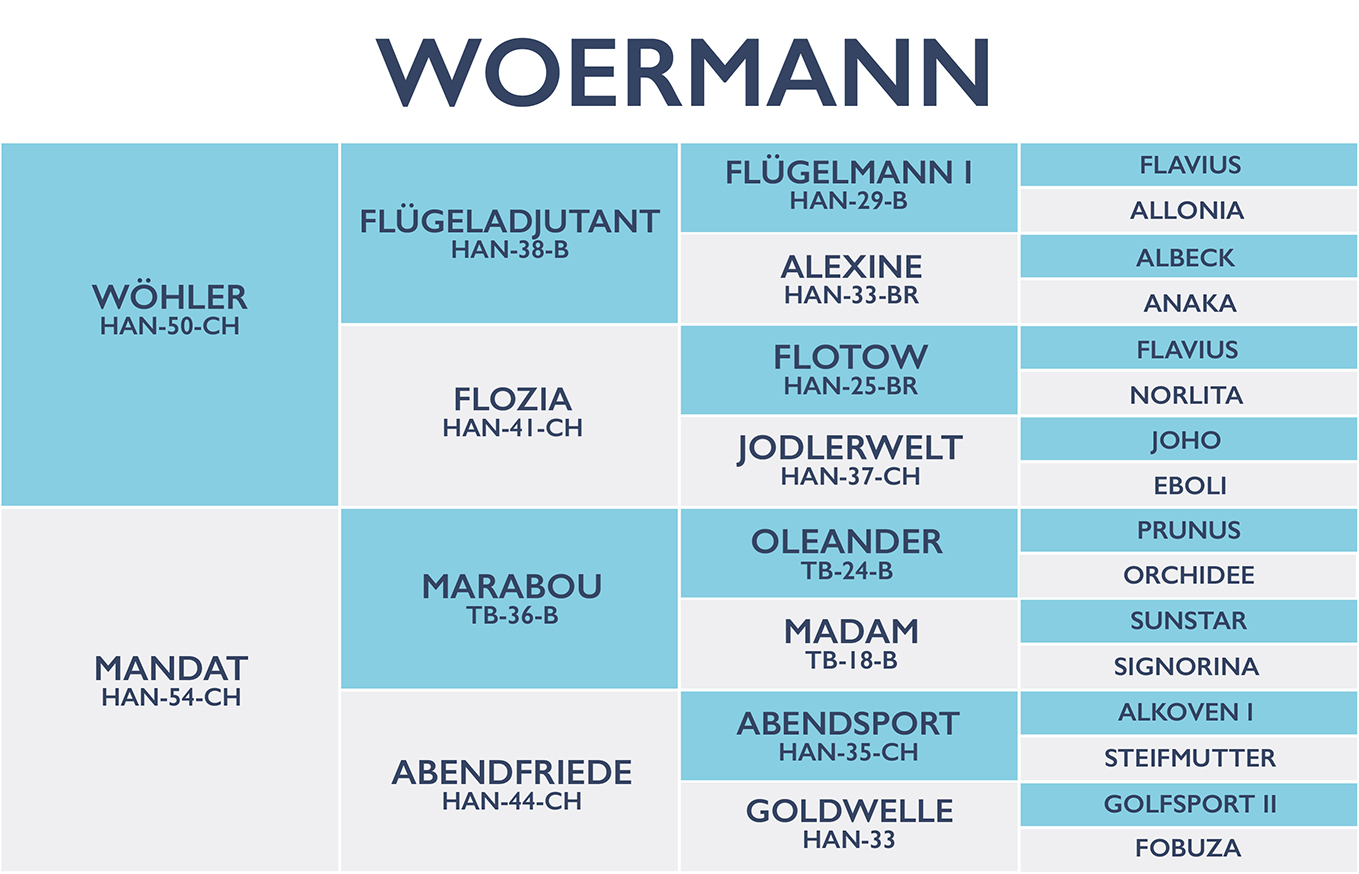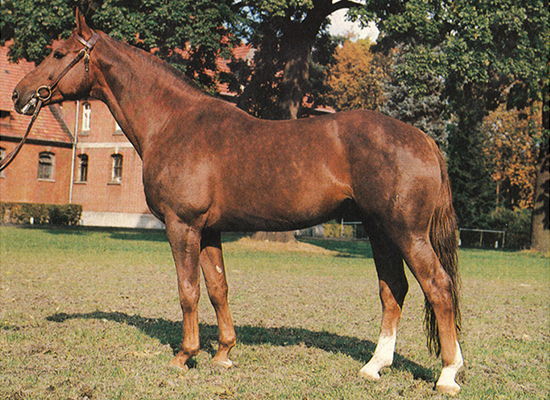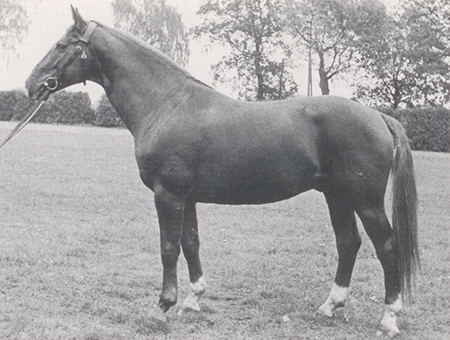1971- 1988 166 cm Chestnut
Breeder: Werner Thalmann
The first public appearance of the two and a half-year-old Woermann at the Hanoverian licensing in 1973 at Verden signalled a total turnaround in Warmblood breeding. Woermann was the new measuring-stick for type, riding oriented outline and construction, but particularly in movement – his elastic, rhythmic and elevated trot was unseen before.
These impressions were confirmed in the 1973 stallion performance test. As expected, Woermann passed with flying colours, and the final report certifies: ‘energetic temperament, sufficient durability, very good rideability, jumping ability of good average, very good walk, outstanding trot, good canter – a very talented riding horse, most suitable for dressage.’ Which was timely since just about then, the sport of dressage was growing in importance and prestige and breeders were now looking to breed for that market.
The well-liked Wöhler
Woermann was the last and best son of the well-liked Wöhler (1950-1971). His dam stems from the solid and high-quality broodmare base of the northern Hanoverian breeding area, on the shores of the North Sea, positively influenced by her sire, the Thoroughbred stallion, Marabou xx. Wöhler himself was very much influenced by his maternal sire, the Thoroughbred, Ecco xx.
According to Claus Schridde in the 2000 edition of Berndt Eylers’ Selected Sires of Germany, Wöhler was ‘for many years the quintessence of dressage horses in the breeding region of Hanover. The liver chestnut covered for a long time in Burlage and thereafter in Alterbruch from 1967 to 1971. He presented the three approved sons, Wohlklang as well as Wunsch I and Wunsch II in his first years. Whilst Wunsch I and Wunsch II, were at best, average sires (the second nevertheless sired Harry Boldt’s Olympic dressage competitor, Woyceck) it would have been desirable for the noble and well-bred Wohlklang to carry on the lineage.’
‘The stations where he covered (Wittingen and Luhmühlen) however had never really been known as strong producers of stallions, so that Wohlklang was restricted to furnishing high-class dressage horses and showjumpers, quality brood mares and highly remunerated auction horses… The upholder of the Wöhler blood therefore came from another quarter. This was Woermann who resulted from the Altenbruch covering period.’
‘The liver chestnut Woerman derives from a high-class dam line. His dam Mandate is one of the few daughters of the Schelderhan Thoroughbred, Marabou xx. The dam line furthermore brought forth such well-known sires as Ambassadeur (private stallion Oldenburg), Ariston (private stallion Hanover), Boredo (private stallion Westphalia), Dior (Warendorf state stallion), Döbeln (Celle state stallion), Dornheld, Firn, Jupiter, Seemann and Sempach (all Neustadt / Dosse State stallions), Gambler’s Star (private stallion Hanover), Mylord (Marbach state stallion) as well as Partisan and the top sire of showjumpers Sender (both Celle State stallions). Woermann’s most important sons are the State Stud stallions, World Cup 1 and Wenzel 1.’
However there was a feeling that Woermann could produce horses with a slightly difficult temperament, very few of them became top competitors, and it was his most famous son, World Cup, who really played a crucial role in the development of the modern dressage horse.




